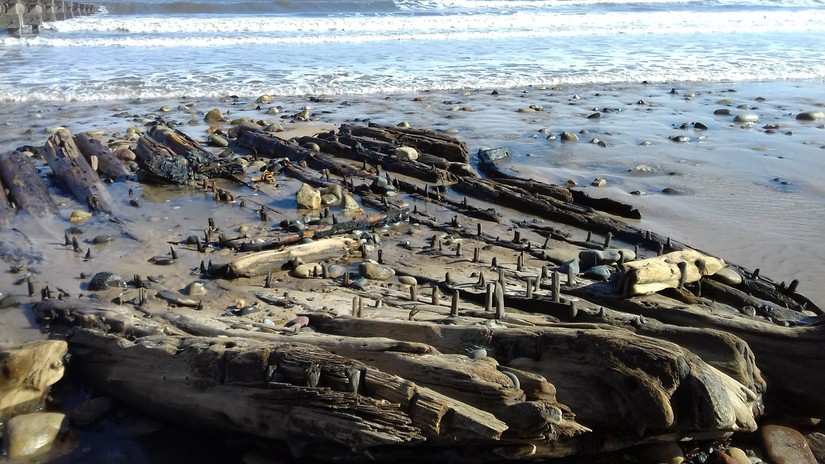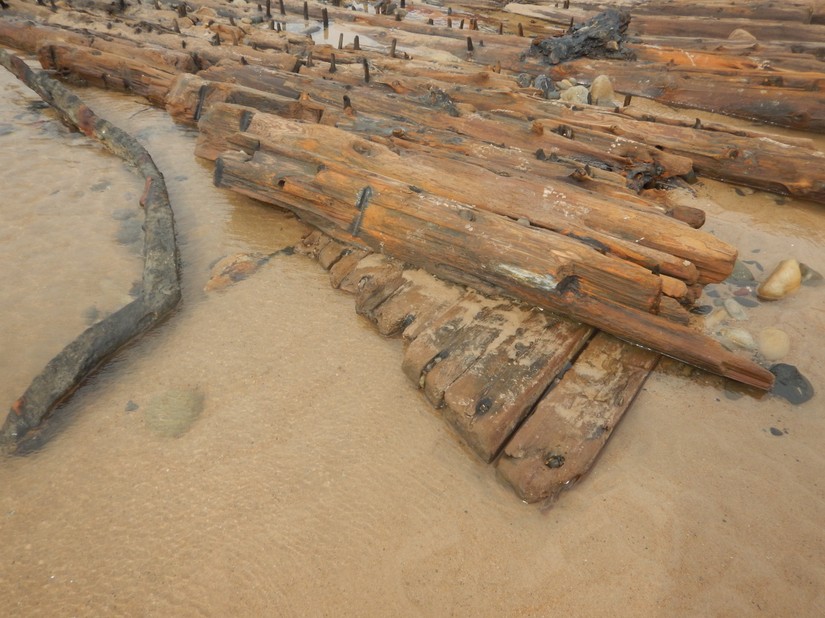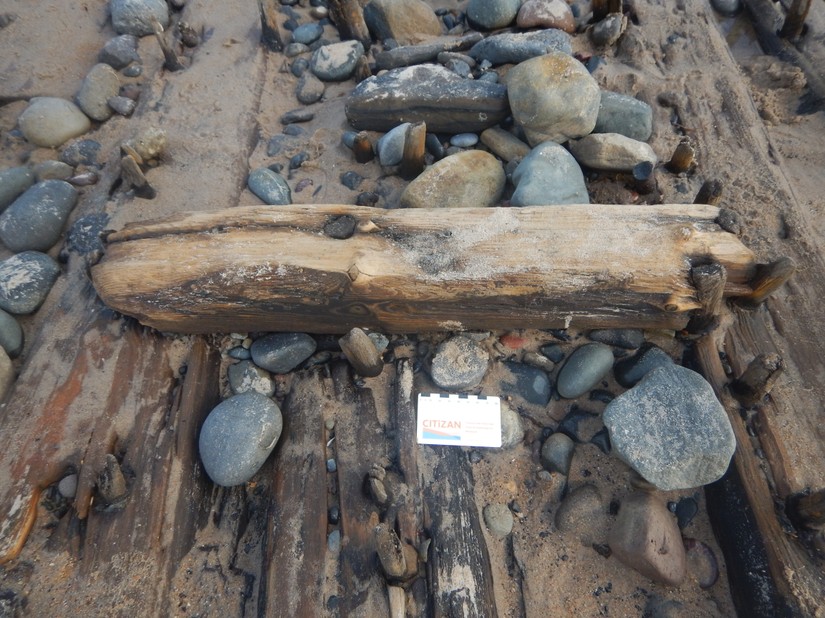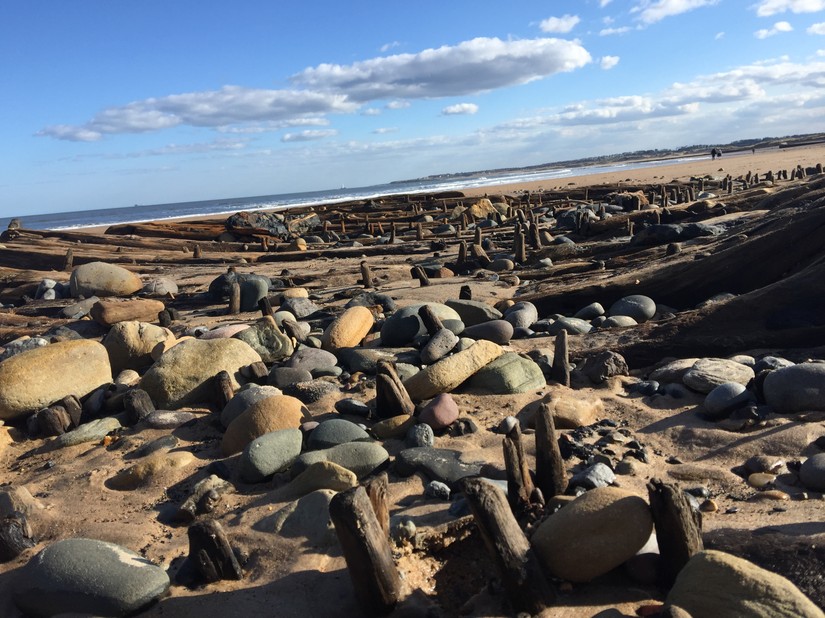A wreck on Blyth beach
14/04/2018 | Andy Sherman
This year’s winter storms have uncovered significant quantities of archaeology on England's coast from World War Two anit-invasion defences in Northumberland to wattle panels from a trackway or fishtrap down in Kent. A surprising number of these features have been shipwrecks and one wreck in particular caught the attention of Citizan's North office. This is its tale:
In March Jacky Jackson was walking along South Beach in Blyth when she saw what she thought might have been a shipwreck being uncovered from the beach's sand and pebbles. Jackie contacted Northumberland's Historic Environment Record to report her finding and the Elizabeth Williams, (Northumberland County Council's Historic Environment Records Officer), passed her information on to Citizan. Then a second member of the public, Angelo Quintano, sent more photographs of the wreck through to us. So Andy and Nick set out to make a digital model of the wreck.

The wreck consists of the remains of a wooden ship, the exposed section of which was 8m long and 7m wide. The remains of the ship are made up of nineteen frames or ribs (curving pieces of timber that give a hull its u-shape and provide the skeleton to which the rest of the ship is attached). In this ship the frames have been built very close together, which would have given the vessel a very robust strength. This manner of construction suggests that the boat was made for heavy duty work. Attached to the underside of the frames are the ship's hull planking, that formed the outside of the ship and in a few places ceiling planks survive attached to the top of the frames.
A little way in front of the wreck is a curved metal object, this is an iron knee. It would have secured the ship's deck to her frames and prevented beams from twisting out of shape. It dates to the 19th century but we don't know if it comes from this wreck.


The frames and planking are held together with wooden treenails and metal pins (probably copper), which pass vertically through all three pieces of timber. The frames were also held together by metal pins passing horizontally through the ends of the frames. The metal pins holding the ship together help to broadly date her and suggest that she was probably built sometime in the 19th or early 20th centuries.

A look through social media sites and on-line satellite images suggest that the ship is exposed and re-covered by sand on a fairly frequent basis with images showing the vessel exposed in 2009, 2011 and 2013. Sadly in one of these previous exposures somebody has hacked large holes in the body of the ship and attempted to cut out most of the metal pins holding the frames together. The rough manner in which this was done suggests that this wasn't deliberate salvage but rather heritage crime.

During the 19th century Blyth started to become one of the premier coal ports in Britain, exporting hundreds of tons of coal from Durham and Northumberland around the country. There are several wrecks of 19th century coal barges inside the harbour at Blyth which have a somewhat similar construction to this vessel, although the frames don't appear to be quite as closely arranged. It has also been suggested that this vessel might be the remains of a whaler, which were equally as heavily constructed as coal barges, sadly though we might never know exactly what type of boat she was.
The sea around the entrance to Blyth harbour was notoriously dangerous, with the rocks to the north of the harbour, known as The Sow and The Pig particularly treacherous. Unfortunately most of the ships wrecked off Blyth are not very well located, often just being described as having been wrecked on Blyth Sands. However a search of the Imperial War Museum's on-line archive has produced a tantalizing black and white photograph taken in 1915 by a navy chaplain called Reverend Frederick George Landin Cruce. The photograph was taken half a mile south of Blyth harbour (roughly where our wreck is located) and shows two uniformed naval officers larking around on the beach. In the background of the photograph a large wooden wreck can be seen breaking apart in the surf, with the sand in the foreground of the photograph littered with fragments of wreck. While the archive doesn't contain any other information it's intriguing to think that this photograph might have been taken soon after our ship was wrecked on the beach.

If you would like to see the 3d model of the wreck made by Nick and Andy click here.
If you want to read more about other shipwrecks and hulks Citizan has recorded click here and here.








